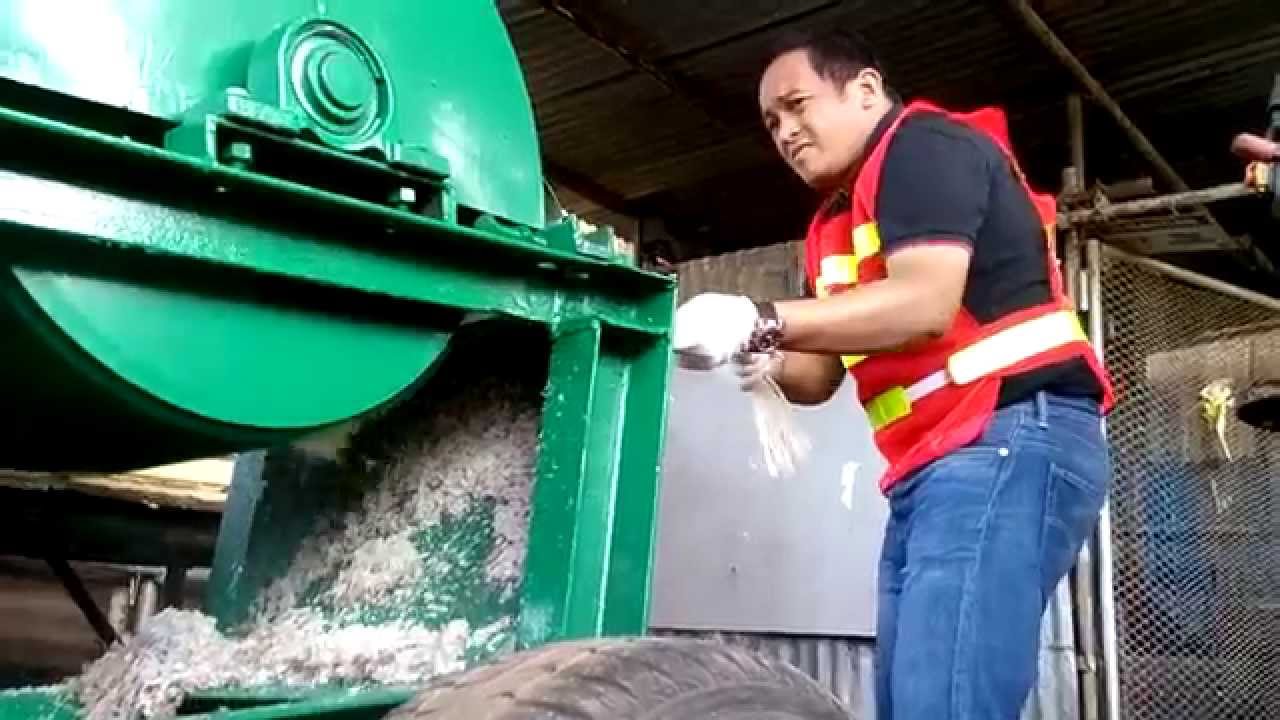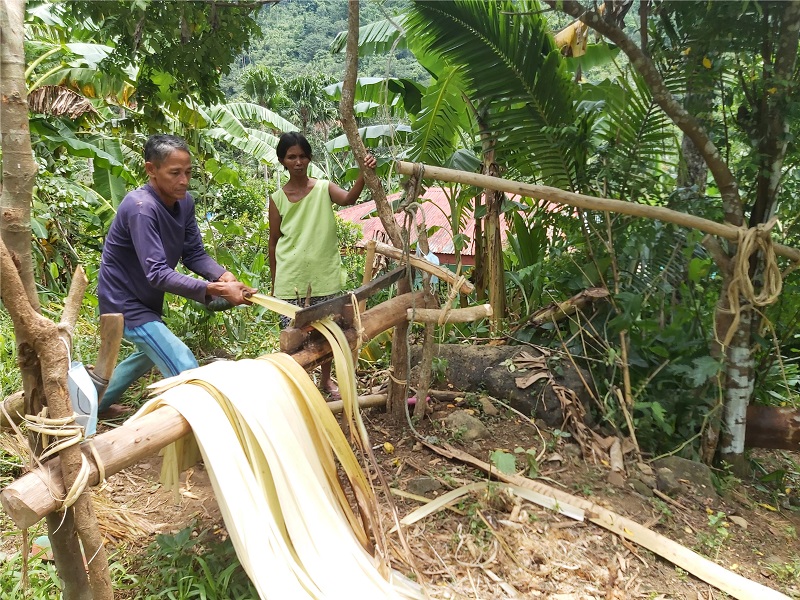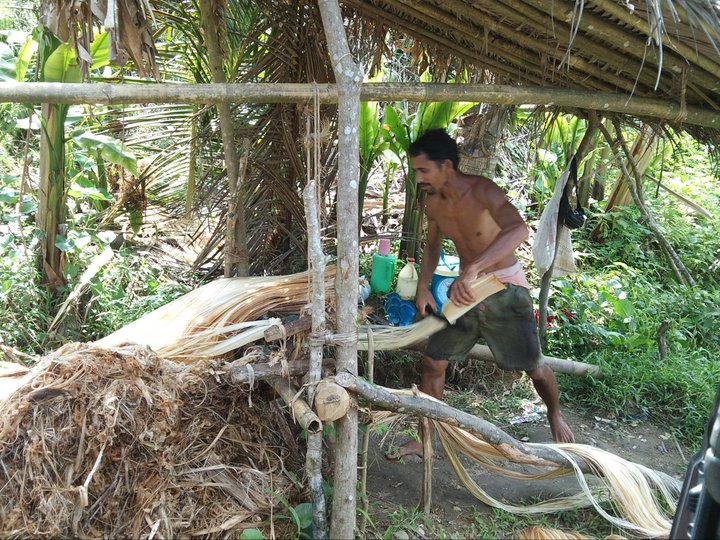
Method of Extraction - Decortication
Decortication in abaca refers to the process of separating the long, strong fibers from the non-fibrous material of the abaca plant. Abaca, also known as Manila hemp, is a plant species native to the Philippines and is widely cultivated for its strong and durable fibers.
The decortication process is typically done mechanically, using a machine that removes the outer layers of the plant and separates the fibers from the non-fibrous material. The machine works by using rotating knives or blades that cut through the plant material and separate the fibers, which are then collected and processed further. Decortication is an important step in the production of high-quality abaca fibers, as it removes the non-fibrous material and ensures that the fibers are strong and durable. The process requires skill and expertise to ensure that the fibers are not damaged or broken during the process, as this can reduce their strength and quality.
The decortication process involves removing the outer layers of the abaca plant, which include the leaf sheaths and the epidermal layer of the stem, to expose the long and continuous fibers inside. This can be done by hand stripping, or by using a decorticating machine, which is a specialized equipment that mechanically separates the fibers from the plant material.
After the fibers have been extracted through decortication, they are washed, dried, sorted and then processed into various products such as ropes, textiles, paper, and other industrial applications. Decortication is a crucial step in the production of high-quality abaca fibers, and requires skill and expertise to ensure that the fibers are not damaged or broken during the process.
Decortication of Abaca
- Ribboning - This method involves stripping the fiber off the abaca leaf in long, continuous strands, known as ribbons. The outer layer of the leaf is cut lengthwise and then peeled away, leaving the long fibers exposed. The fibers are then extracted by hand and cleaned.
- Whipping - This method involves stripping the fiber off the abaca leaf in shorter, smaller pieces, known as whips. The outer layer of the leaf is cut into small pieces, and the fiber is then whipped or beaten with a wooden stick to separate it from the plant. The fibers are then extracted by hand and cleaned.
Both ribboning and whipping methods of hand stripping require skilled labor and are time-consuming, which can make them more expensive compared to mechanical extraction methods. However, they can produce high-quality fibers that are prized for their strength and durability, making them popular among small-scale producers and artisans who specialize in producing high-quality abaca fibers.


